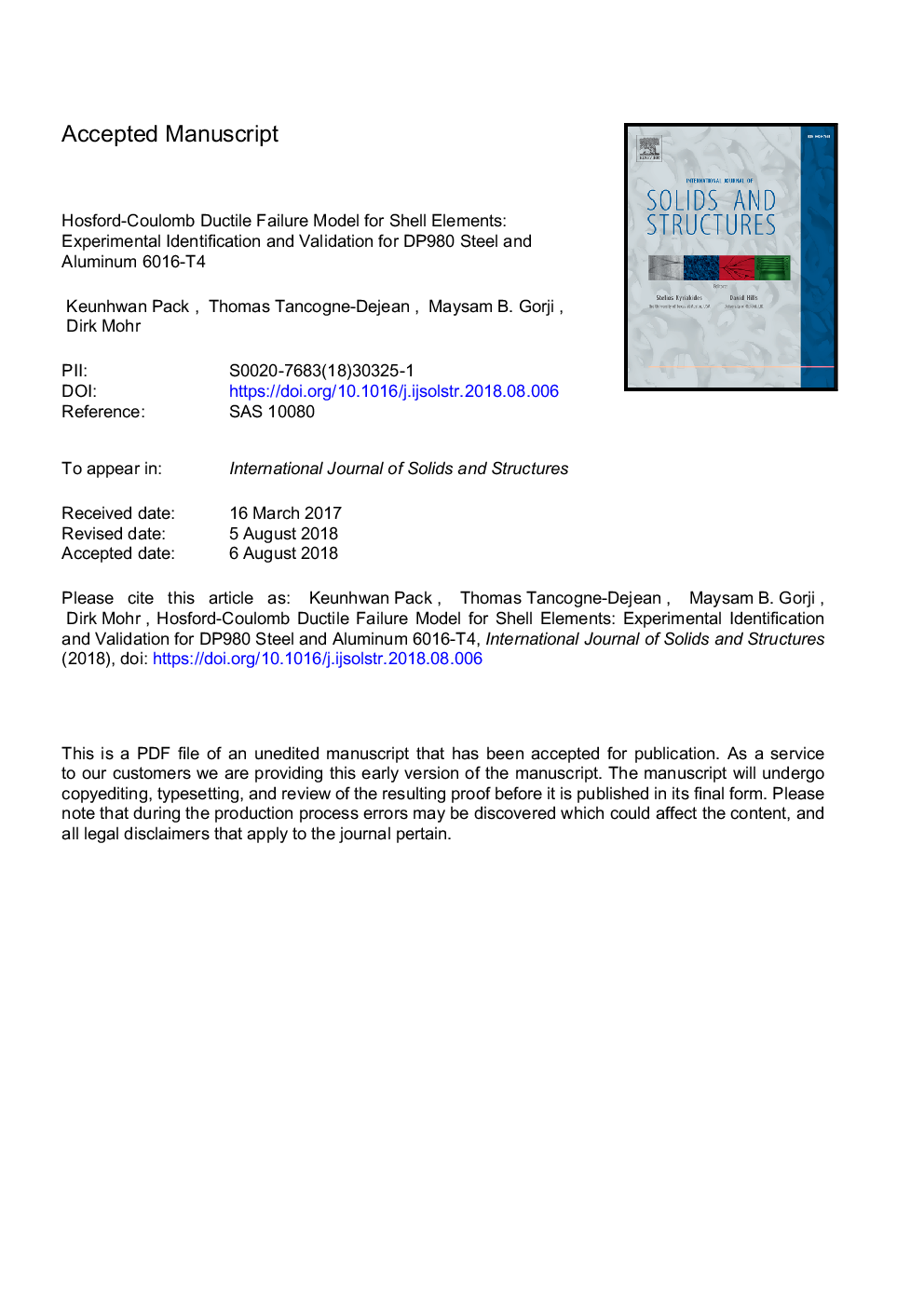| Article ID | Journal | Published Year | Pages | File Type |
|---|---|---|---|---|
| 10225398 | International Journal of Solids and Structures | 2018 | 48 Pages |
Abstract
When using shell elements, the Domain of Shell-to-Solid Equivalence (DSSE) needs to be defined in addition to the Hosford-Coulomb (HC) fracture initiation model to guarantee the convergence of the initiation of ductile fracture with respect to the mesh size. A comprehensive plasticity and fracture testing program is performed on 0.8â¯mm thick DP980 steel sheets. It includes uniaxial tension experiments along different material directions to characterize the plastic response, as well as simple shear, V-bending, and punch experiments to characterize the HC model parameters. Nakazima, tension, and bending experiments are performed on flat specimens with different notch radii to validate the predictions obtained with the combined DSSE-HC model. Aside from calibrating and validating the model for DP980 steel sheets, the model parameters are also identified from experiments on 1â¯mm thick aluminum 6016-T4 sheets and validated through numerical simulations of the deep drawing of a triangularly-shaped cup. The good agreement of the shell element simulations with all experiments demonstrates that the DSSE-HC model is capable of providing reasonable predictions of the onset of ductile failure for both membrane- and bending-dominated loading conditions.
Related Topics
Physical Sciences and Engineering
Engineering
Civil and Structural Engineering
Authors
Keunhwan Pack, Thomas Tancogne-Dejean, Maysam B. Gorji, Dirk Mohr,
